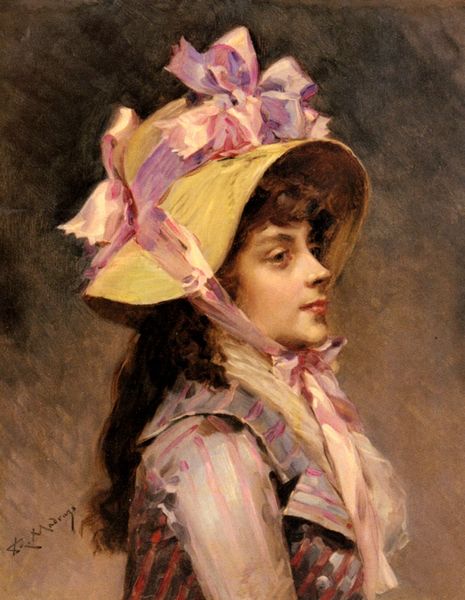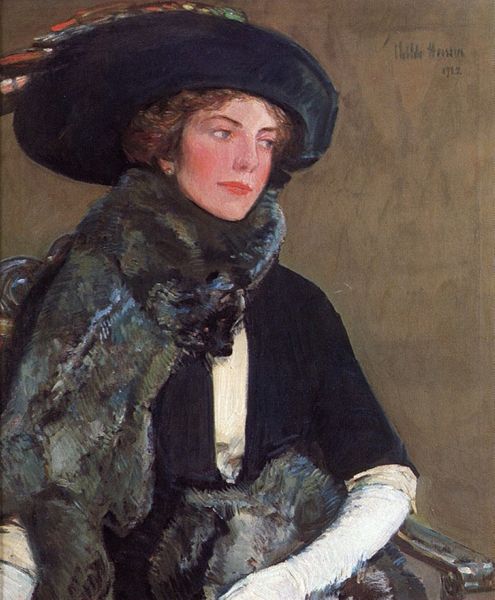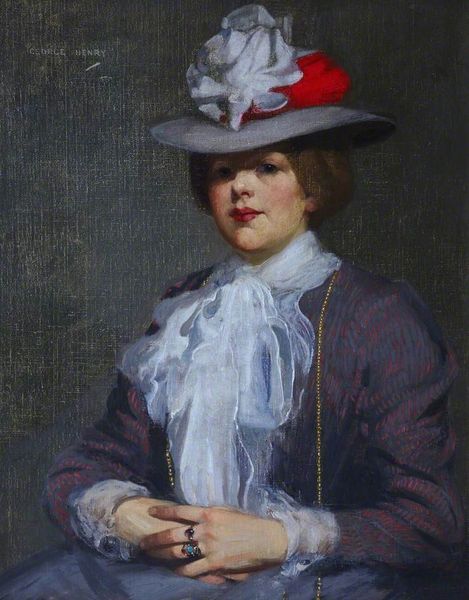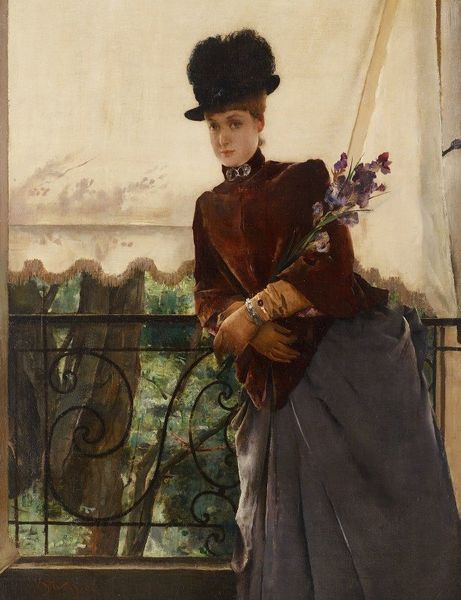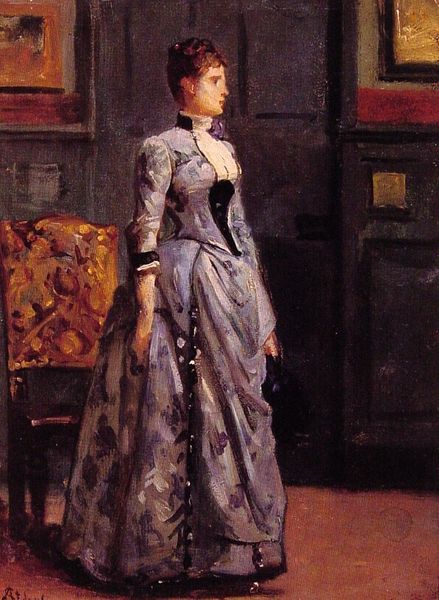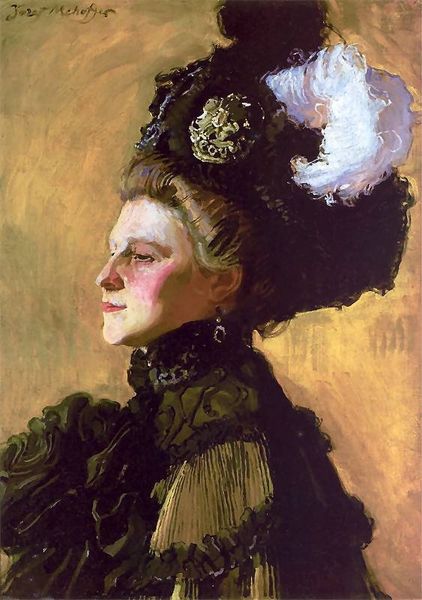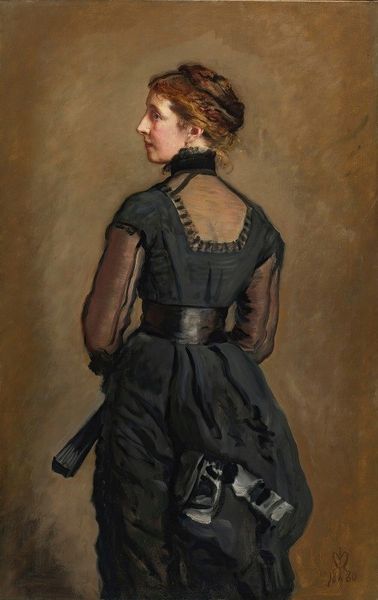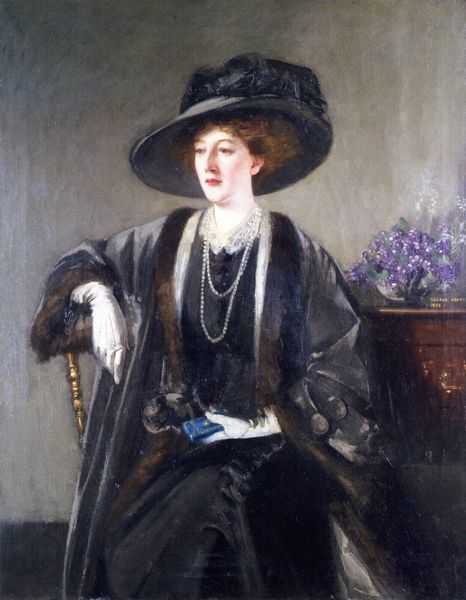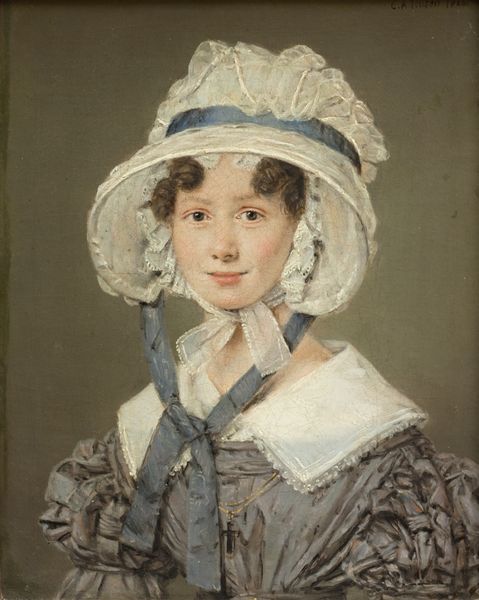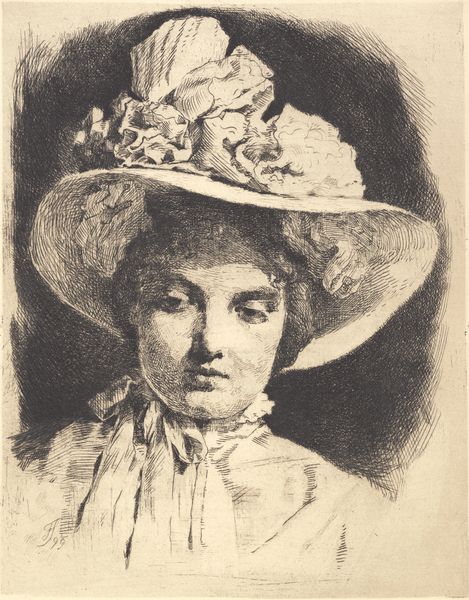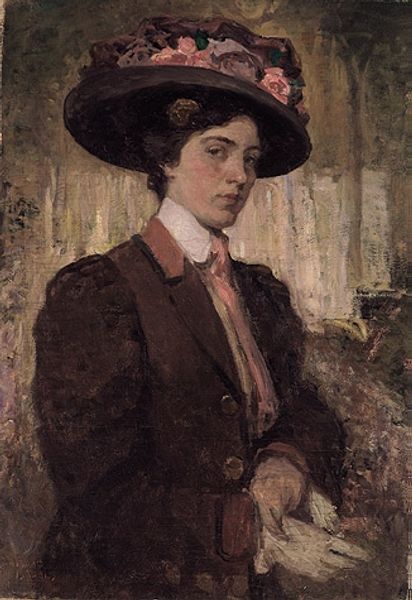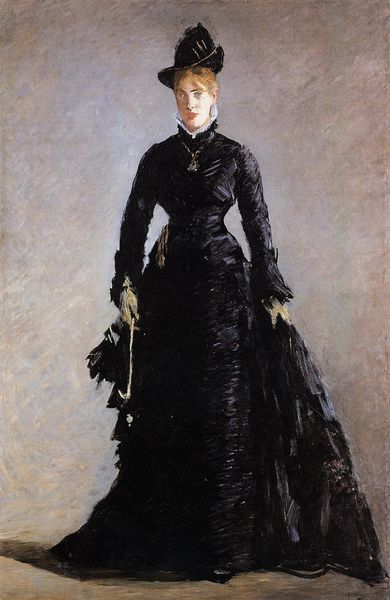
Copyright: Public domain
Editor: This is Louise Abbéma’s "Une élégante place de la Concorde," painted in 1894. It looks like an oil painting, and it strikes me as surprisingly modern for its time. The way the figure dominates the canvas, almost flattened against the background... How do you see its composition working? Curator: I agree that the figure’s presence is arresting. Notice the almost monochromatic palette – a strategic orchestration of mauve and lavender tones that govern not just her garments but seem to subtly bleed into the architectural background as well. It’s as if Abbéma is dissolving the figure into her environment. How does that color choice strike you? Editor: It gives the image a kind of dreamy, ethereal quality, almost as if the woman is fading away. Is this perhaps a comment on the transient nature of modern life? Curator: Perhaps. But consider also how Abbéma contrasts the softness of the figure’s clothing and feathered hat with the implied rigid geometry of the Place de la Concorde itself. Semiotically, what does this juxtaposition evoke for you? Editor: I suppose it creates a kind of tension. A dialogue between the organic and the artificial, the fleeting and the permanent. The blurring seems intentional. It forces you to contemplate what exactly Abbéma wanted to portray, what aspects of this woman and setting truly represent their essence. Curator: Precisely. The interplay of these formal elements is the work's defining characteristic. Do you find it effective, then? Editor: I do. Initially, the flatness felt almost naive, but now I see it as a deliberate aesthetic choice, highlighting the complexities within apparent simplicity. Thanks! Curator: Indeed. Art often conceals its deepest meanings within its seemingly most straightforward elements. This work encourages the careful viewer to unravel those meanings for themself.
Comments
No comments
Be the first to comment and join the conversation on the ultimate creative platform.
